Uganda. Ker Kwaro. The Guardian of Acholi culture.
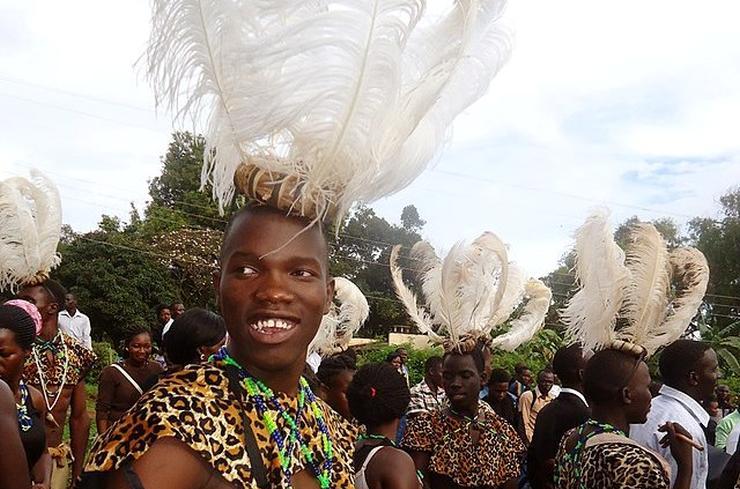
A cultural institution representing the Acholi chiefs. Their rules for society today.
The Acholi are a Luo-speaking group of people living in the Northern Uganda, and they are believed to have migrated from Bahr el Ghazal in South Sudan. By about 1,000 AD. Starting in the late seventeenth Century. Ker Kwaro Acholi is a cultural institution representing the chiefdoms in Acholi. This Institution comprises 54 traditional leaders who are heads of clans (Rwodi singular Rwot or chiefs) of the Acholi people, each clan in the Acholi region represents chiefdom.
The institution is the custodian of Acholi cultural practices and traditional values. Ker Kwaro dates back to 1400AD when the Luo ethnic group started a migration southward through South Sudan. By 1912, there were 50 well-established hereditary chiefs in Acholi land. According to history, the institution and ideology of ker Kwaro are crucial to the development of an Acholi society and identity was introduced into north-central Uganda by the Paluo.

Acholi chief. By 1912, there were 50 well-established hereditary chiefs in Acholi land. Photo: Richard Buchta (1845-1894)
The Paluo were part of the same Migration that came down through South Sudan, they were the first Luo in parts of Acholi and the new ruling Babito Dynasty in Bunyoro Kitara. The Babito moved into core areas of Bunyoro and eventually adopted the Bantu Language of the majority there. While the Paluo settled in the very north of the kingdom and continued to speak Luo. The Paluo were a part of the Bunyoro-Kitara Kingdom, their experience and ideas of society and government were shaped by that Kingdom. Three related aspects of this Paluo experience were vital to the development of the new political and cultural order in Acholi. The basic Paluo concept of rwot was hereditary rulers who enjoyed great prestige, and respect organized tribute payments to rulers in recognition of their authority and possessed the royal regalia most importantly the Royal Drums as a symbol of their rule.These features embodied the fundamental ideological elements and principal centralizing structures in the Acholi chiefdoms.
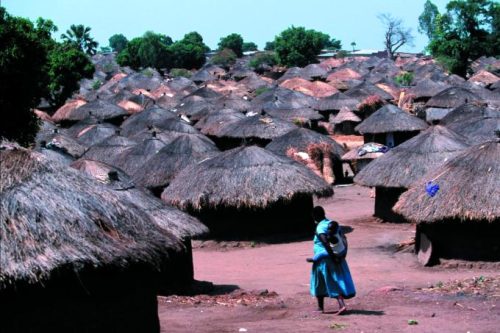
Acholi Village in the North of Uganda.File swm
When the Paluo arrived in Bunyoro-Kitara, their traditions were asserted. The Paluo joined the Bunyoro-Kitara, and they accepted the authority of the Bunyoro-Kitara king whom the Paluo called Rwot.
Rwot in Paluo meant not only the Bunyoro-Kitara king but also the heads of the Paluo chiefdoms. Each Paluo Chief owed allegiance to the Bunyoro-Kitara King.Within his own Chiefdom, a chief seemed to have a smaller-scale replica of the king. They received allegiances and respect; they collected tributes keeping some and passing some on to the King
of Bunyoro-Kitara.
Payira Paico and Paibona Aspect.
Another aspect of the origin of ker kwaro acholi is the aspect of Payira, Paico and Paibona. There is another belief that the three indicate a close association of their origin, especially their royal origin. The three ruling lineages assert that one of their ancestors was the famous Labongo, leader of the early Luo when they quarrelled and separated at Pubungu. Paico and Paibona traditions add that Ayira, Acoo and Abona were brothers and their father was Labongo.
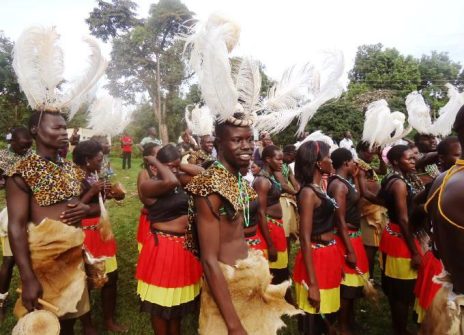
Dancers from acholi region ready to perform a cultural dance. CC BY-SA 4.0/ Ngumenawe
They proclaim the royal lineage of the three chiefdoms as early Luo then they also link from early on, the smaller chiefdoms of Paico and Paibona and then the larger and powerful Payira. Paico and Paibona lived near Payira during the eighteenth and nineteenth centuries, when Payira became the largest and most powerful chiefdom in Acholi he overshadowed and dominated his neighbors’ claims of brotherhood stretching back to the early luo of Pubungu.
The three settled in the central zone of Acholi where there is a higher percentage of royal lineages than anywhere else in Acholi, they settled in the central zone of Acholi to date.Meanwhile, Acholi’s claims of ties to Pubungu are rare. Bunyoro\Paluo is invoked far more often than Pubungu to assert Luo origins. The only Acholi groups whose traditions include reference to Pubungu are the royal lineages of Alero, Patiko, Pawel, Koc, Bwobo, Paico, Paibona and Payira.
First Luo Chief and Royal Regalia
The Paluo Chief possessed royal regalia originally conferred as gifts by Bunyoro-Kitara kings.The Paluo concept of rwot referred to a cluster of the general attributes of attitudes towards political leadership.The Paluo makes the relationship between the Ker Kwaro, tribute and royal drums clear.The Royal Regalia included Royal drums, Royal Spear, Royal Stool and Royal Beads.It is believed that the first Paluo Leader was a woman named Nyawir. The royal regalia conferred on Nyawir included a Drum, Stool, Spear, and beads. That is the origin of the royal regalia used
in the Ker Kwaro to date.
When the second Paluo chief Rwot Pajao took over, the Bunyoro Kitara rulers who were now Babito and not Bachwezi gave him similar regalia. But in both instances, the most important regalia were the royal Drum.
Bunyoro Kitara political Culture as experienced by and filtered through the Paluo served as a model for Chiefdoms in Acholi.
Authority and Roles
One crucial characteristic of these chiefdoms was the limited power and authority of those at their head. The problem came from the small size and small population of the chiefdom, the rwot sharing political power with village lineage heads. Another limit on the power of rwot was the dissatisfied members of the chiefdom to migrate.
Chiefs (Rwot) and royal lineage (kal) used many strategies to establish the new order and their leading place in it. Both rowdy and other members of Kal frequently forged marriage alliances with potential or newly joined subordinates royal narratives traditions in particular recount many instances in which rwodi(chiefs) provided food to eat, a place to settle, military protection or assistance for those in difficulty. The ability to arbitrate disputes that individual lineage heads or the heads of multiple-village groupings could not.
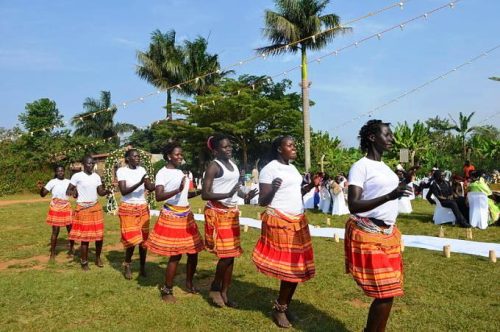
Traditional dress for Acholi women. CC BY-SA 4.0/ Bettycath
Rwodi represented them and were acknowledged by their followers as rainmakers an especially attractive power in the dry and uncertain physical environment of Acholi.
Positive enticement brought lineage into chiefdoms such as the continuing importance of existing lineage leadership, each lineage continued to choose its head and the lineage head with the assistance of his elders also continued to organize lineage-based production control the material meant the ideological rules of the marriage, conduct and interpreted lineage rituals, settle most internal lineage disputes and manage lineage affairs.
Most Lineage heads (rwodi or Lodito Kaka singular Ladit Kaka) took on new roles in the chiefdom in their capacities as the main advisors of the rwot. Lineage heads worked with rwot to settle disputes between lineages and the chiefdom and also disputes between the chiefdom and outsiders like other neighbouring kingdoms.
They also helped determine and collect compensation for wrongs and crimes committed and organized major chiefdom rituals such as the annual planting and harvesting ceremonies. Coordinated and supervised tribute collections and services.
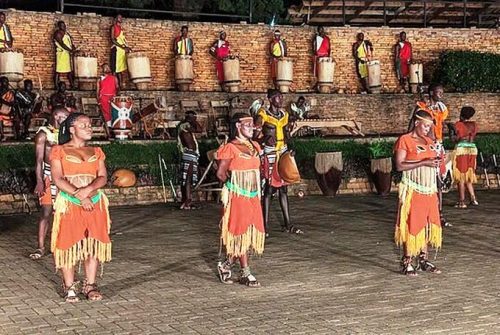
The Raka-raka dance is a traditional dance from the Acholi people. CC BY-SA 4.0/ Kateregga1
Within most lineages, heads not only continued to play primary roles in their lineages but became key people in polity-wide rituals as well. Many took specific chiefdom-wide and chiefdom-oriented ritual duties, they oversaw the maintenance of the royal regalia, some took care of rwot’s abila (shrine) some kept the rainstones(ame) used for making rain and others arranged funerals and burials when rwot died and also helped select and install his new successor.
Chiefdom-wide rituals focused on the gods or spirits(Jogi or Jok) distinct from the ancestors. Because they are part of the belief systems of a wide range of contemporary central Sudanic and Nilotic people.
Succession
The succession of a rwot belonged to the youngest son of the wife who had undergone installation with the deceased rwot known as dako Ker (chief wife). Succession was also based on consideration of several preferences and not rigid stereotype rules. Qualities such as generosity, intelligence, proper manners and behaviours towards others counted more than the order of birth. Village lineage heads who were prominent elders of the royal lineage(Kal), and dako ker of both the deceased and succeeding rwot often played important roles in the selection
of the next rwot.

Back home after school. File swm
Four features marked succession rituals in many chiefdoms. Royal regalias and other common symbols associated with rwot were the royal drum (bul ker) would be played royal, royal spears (tong ker) and other regalia would be displayed rwot and other participants would be seated on royal stools (kom Ker) draped in leopard or lion skins.
Dako Ker the chosen successor often specially picked to be installed with him had a role in the ceremonies, she was a caretaker of the royal regalia. Specific lineage and lineage heads had particular roles in the succession ceremonies, one lineage may be responsible for playing the royal drum during the installation of a chief, others provide councillors who sit next to the succeeding rwot and dako ker, another lineage may provide a lineage head to anoint the succeeding rwot with oil, All roles are signified positions of these lineages and their heads within the chiefs and provided highly visible avenues for individual lineage and pride.
Ker Kwaro today
Today the cultural institutions still exist though their roles have now changed as compared to the past, today Ker Kwaro has helped in facilitating reunification and reintegration of ex-combats in their communities, through performing traditional cleansing (Mat oput), mediation, harmonious relationships and resolution process, and maintaining and emphasising the Acholi traditions and customs. The institution is still a hereditary institution with all its chiefdoms intact. (Open Photo: A traditional Acholi dancer. CC BY-SA 4.0/ Ngumenawe)
Irene Lumunu



